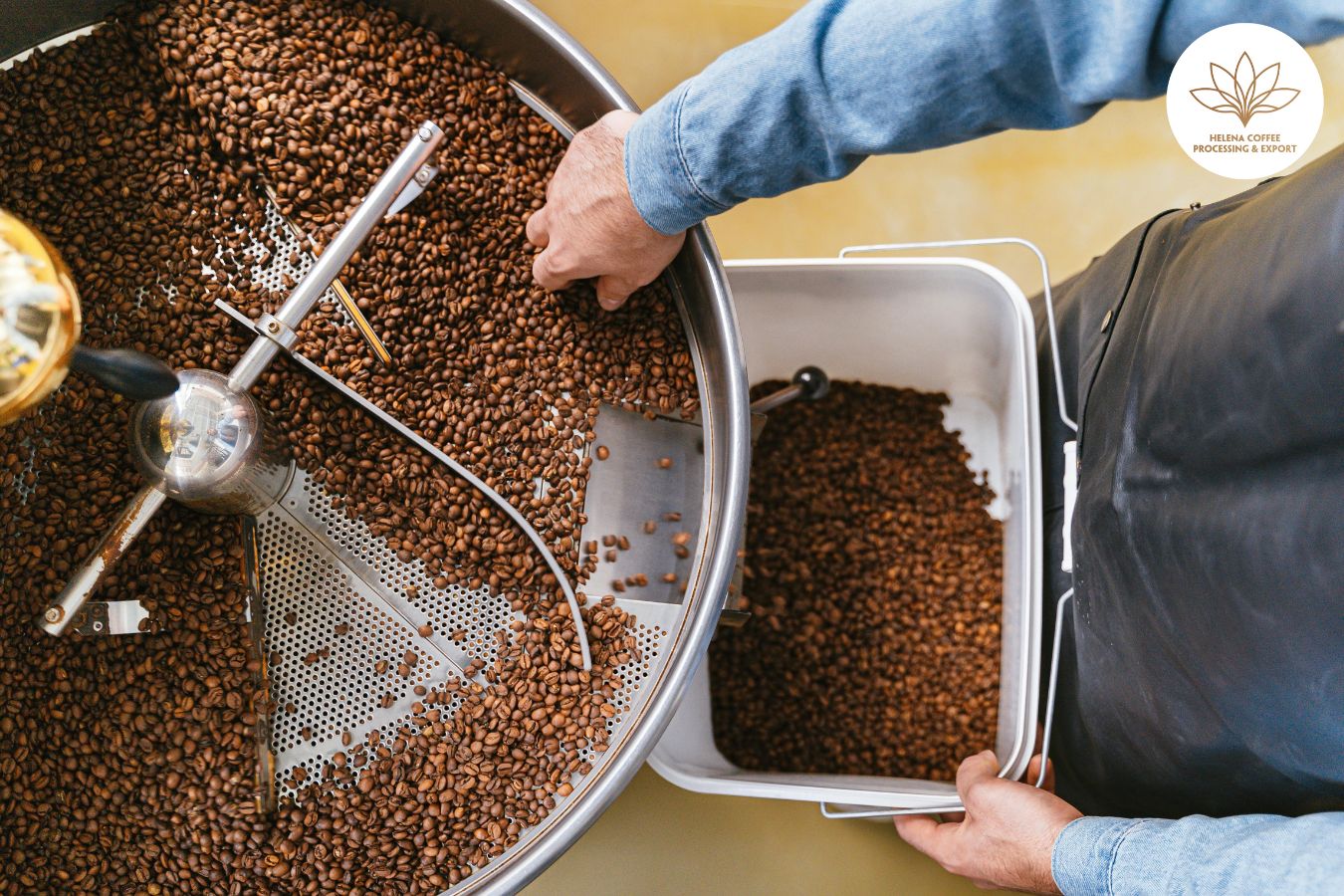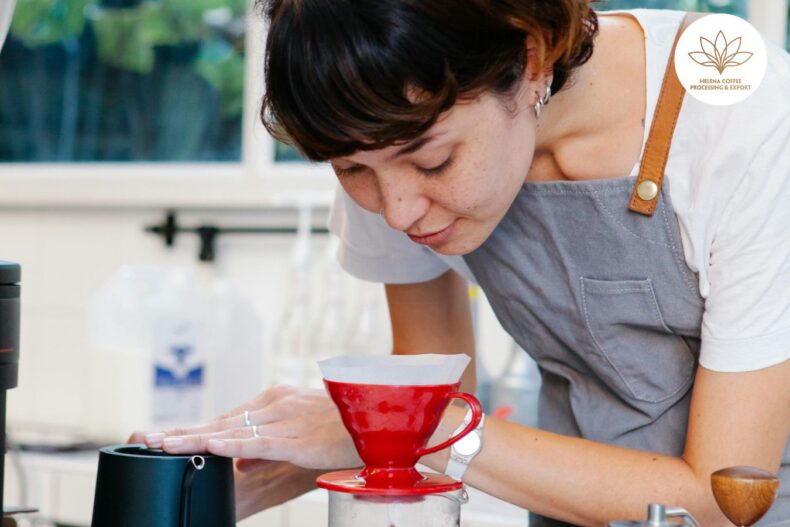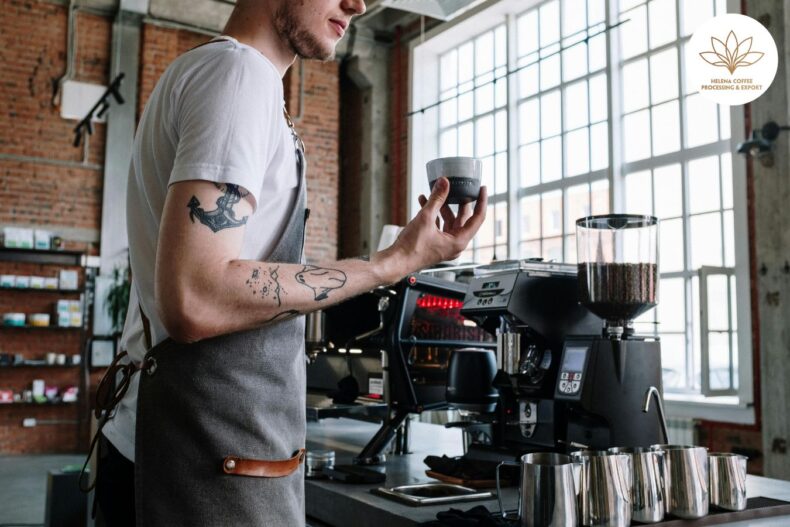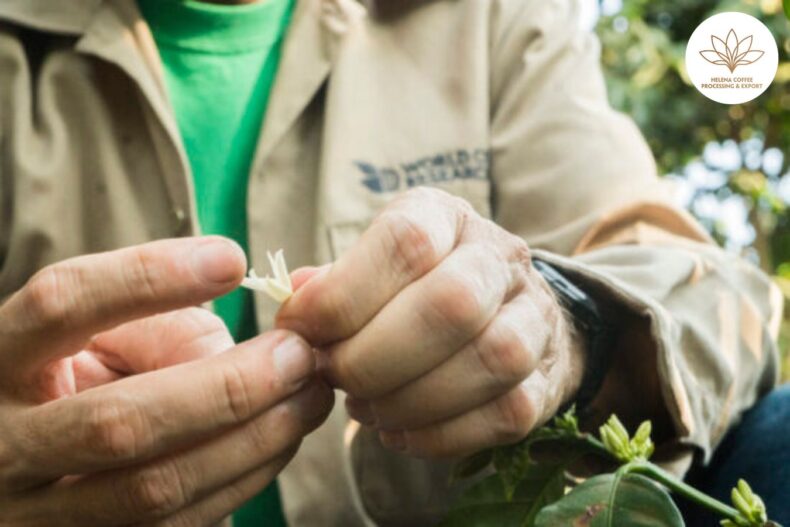
Selling Of Coffee: Buying coffee from other coffee growers and then selling it as your own is a common practice in producing countries ; However, just because it is common does not guarantee that it is carried out in the most ethical and transparent manner.
Although in the past this type of buying and selling of coffee was permissible and little questionable, today it is a polarizing practice that has its detractors and defenders. How positive or negative it is for the value chain will depend on the way it is carried out.
To learn a little more about this dynamic and the opinions that exist in the union about it, I spoke with a fourth-generation producer from Guatemala and with the owner of a specialty coffee shop in Peru. He continues reading and find out what they told me.
Is it a recurring dynamic?
Relationships between producers are very common and usually have different interests: at an educational level, such as management and transfer of knowledge; cooperative, in the collective purchase of agrochemicals or certifications, or with commercial interests, such as the purchase and sale of coffee.
The latter raises criticism and different positions when the commercial exchange is not the fairest and ends up disfavoring the seller. Selling Of Coffee: A Guatemalan coffee farmer, who preferred to withhold his name, indicates that this dynamic does not happen among small-scale coffee farmers. Normally, it is the large producers who require the grain produced by the smaller ones for different purposes.
Omar Armando Moreno, known as El Cafeteador, is a promoter of the domestic consumption of Peruvian coffee and owner of the specialty coffee shop Barra Cafeteadora , in Lima, Peru. Selling Of Coffee: He says that through the trips he has made to different origins in his country he has detected that buying and selling between small farms is very common for volume or commercial coffee but not for specialty microlots and nanolots.
Selling Of Coffee: “The majority are small private coffee growers or family farmers who have one or two hectares and sometimes at a fair a buyer arrives who likes their coffee but they cannot meet the volume. For this reason, we look for neighbors or relatives. Normally the families live in the same mountain so they buy from each other; However, they do so without neglecting traceability to maintain the same or similar quality.”
He adds that these commercial relationships are not different from the modus operandi of coffee cooperatives . Selling Of Coffee: “This is what normally happens in cooperatives because they gather coffee from different producers, from different parts, simply to meet the volume; However, within the cooperative or associative model it is normal but when they are independent producers of microlots it seems strange.”
In which countries in the region is it most common?
The Guatemalan producer believes that Central America is where this phenomenon occurs most. Selling Of Coffee: He argues that the deficiencies and high levels of poverty recorded in coffee-growing areas foster inequalities, which are taken advantage of by large buyers and exporters.
Limited access to information, credit, fragile economies, lack of support or precarious road infrastructure are problems that fall on the shoulders of small producers , who find themselves incapable of producing high quality coffee, exporting direct, develop your own brand or transport your coffee to urban areas and local markets.
These weaknesses represent great opportunities for large coffee growers, large landowners or exporters, who take ownership of the raw material under inequitable treatment and in this way obtain better profits.
Omar says that in most Latin American countries, history repeats itself because, unlike other nations that put value in their agriculture and have it technical and industrialized, coffee growers unfortunately are not entrepreneurs and do not have the financial capacity and knowledge to transform the product, invest in technology or manage a farm in the most efficient way.
How are those involved benefiting or affected?
Selling Of Coffee: This business model is usually attractive to some coffee growers because it guarantees a sale in record times and the risks of the harvest being lost or its quality decreasing are reduced.
“In Guatemala, washed parchments are not sold, as is known in other countries, here they are sold in cherry. As soon as it is cut, it is sold and that’s it. Therefore, it is a practice of quick access to cash to solve the economic situations of coffee growers ,” says the producer.
On the other side are the buyers, those who benefit the most from this economic deal because they buy the grain at competitive, profitable prices and it leaves them with more profits once it has been transformed.
According to the producer, these transactions have opened a door to the monopolization and concentration of grain in some regions. Selling Of Coffee: An example is the region of Antigua, Guatemala, where there is a lucrative monopoly on the purchase of ripe coffee.
In 2012, when rust aggressively attacked coffee plantations, production in the Central American country fell by 60%. Selling Of Coffee: Paradoxically, in Antigua the harvest increased 40% because a large volume of coffee was purchased by large farms located in the region and which resell the coffee at higher prices.
In the past, selling coffees from other farms without revealing their origin was not a reprehensible practice considering that the bean was mixed and roasted, resulting in a standard coffee.
Currently, this practice is not acceptable, especially in the specialty coffee industry. The roaster , who has great responsibility for the result in the cup, is the most interested in knowing the traceability and origin of the fruit. Selling Of Coffee: This is where the ethics and transparency of the producer come into play, who must provide truthful information about the origin of the product.
Otherwise, the result may be an inconsistent cup, of different qualities, which may entail costs for the roaster’s business and calls into question the product that will reach end customers, who are increasingly more informed and trained.
Traceability and quality: affected by this practice
Today, more than ever, traceability is relevant throughout the value chain and depends on the transparency of all actors for it to be a fact. Selling Of Coffee: In this dynamic, buying coffee from other producers is only traceable if a fair price is being paid and therefore buyers and consumers are informed that the coffee they have in their possession comes from different farms.
The Guatemalan reiterates the importance of being transparent when selling because that will be decisive in the commercial relationship with the client. Selling Of Coffee: It will depend on each producer whether he cements a relationship based on trust and truthfulness or, on the contrary, on lies, which can generate a negative image or unexpected breakups.
Selling Of Coffee: One option proposed by the producer is that in the event that an extra volume is required to complete a certain quantity, the buyer is directly connected to the coffee grower to eliminate intermediation and give more farmers the opportunity to do business with clients.
“For us it is more important to have the reputation that the farm has had than to have more clients. We have several clients waiting or we have helped more friends to export.” Quality is another asset that can be affected by this practice. Selling Of Coffee: The coffee grower says that if the processing of the farm that collects all the crops is not well technical, it will undoubtedly affect the cup.
He explains that in his region it is common to obtain 86-point coffees, which are considered special lots. Now, if the benefits are not adequate, the coffees can lose quality and rate 83 and 84 points because “as they mix everything when they remove the pulp, the pulping turns green and they take away the quality. “One green grain damages 100 ripe ones.”
In the modern industry, buying grain from producers to meet a volume is a questionable method if it is done for profit at the expense of the deficiencies, shortcomings and ignorance of coffee growers.
Selling Of Coffee: If this practice is not carried out in a transparent manner, it will not only have negative effects on small producers, buyers and consumers may also be subjected to deception and increases in their costs, which can deteriorate trust and the commercial relationship. Therefore, new ways of carrying out these sales and purchases must be rethought and that provide more opportunities for small-scale coffee growers to grow in the business.
FAQS:


